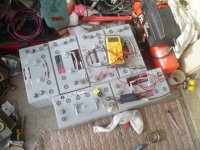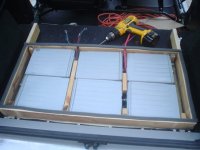Hey guys/gals,
This is my first post on the forum, though I've been lurking for a while...
I've recently become an ebike owner, and have taken an interest in battery technology as a result. I know lithium is currently the most appropriate tech for EV's, but maybe not so for stationary equipment storage?
My sister Deborah is involved in a company that has recently launched a couple of new solar storage products with off and on grid capabilities, using SLA batteries. I'd be interested to hear anything you guys have to say about it, positive or critical (so long as it's constructive...)
This post is partly me looking for some opinions from people who are clued up on battery tech to satisfy my own curiousity (where better to look than on this forum...), and partly a shameless plug to help out my big Sister.
I hope some of you take the time to have a look and let me know what you think. If you have any queries about the tech, the products or the company itself, they are best asked via one of the contact emails at the bottom of the company's home page
This is my first post on the forum, though I've been lurking for a while...
I've recently become an ebike owner, and have taken an interest in battery technology as a result. I know lithium is currently the most appropriate tech for EV's, but maybe not so for stationary equipment storage?
My sister Deborah is involved in a company that has recently launched a couple of new solar storage products with off and on grid capabilities, using SLA batteries. I'd be interested to hear anything you guys have to say about it, positive or critical (so long as it's constructive...)
This post is partly me looking for some opinions from people who are clued up on battery tech to satisfy my own curiousity (where better to look than on this forum...), and partly a shameless plug to help out my big Sister.
I hope some of you take the time to have a look and let me know what you think. If you have any queries about the tech, the products or the company itself, they are best asked via one of the contact emails at the bottom of the company's home page



